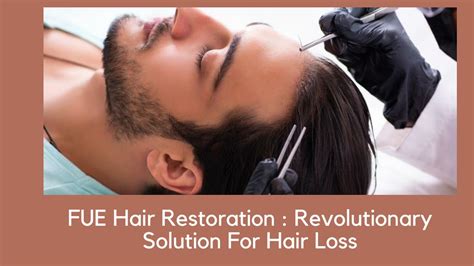Experiencing hair loss can be a devastating blow to one’s self-esteem and confidence. Fortunately, advancements in modern medicine have brought forth non-surgical hair replacement techniques that offer hope to individuals grappling with this issue.

10 Key Benefits of Non-Surgical Hair Replacement
- No Scalpel, No Scars: Unlike surgical hair transplants, non-surgical methods involve no incisions or scarring, minimizing recovery time and eliminating the risk of post-surgical complications.
- Immediate Results: Non-surgical techniques provide immediate results, allowing you to regain a fuller head of hair within hours or days.
- Versatile Options: Non-surgical hair replacement offers a range of options, including wigs, hairpieces, and extensions, catering to different preferences and hair loss patterns.
- Customizable Appearance: With non-surgical methods, you can choose the hair color, texture, and length that best complements your features and style.
- Non-Invasive: These techniques do not involve invasive procedures, making them ideal for individuals who are not candidates for surgery or prefer a less drastic approach.
- Safe for All Hair Types: Non-surgical hair replacement is suitable for all hair types, from fine and fragile to thick and coarse.
- No Long-Term Commitment: Unlike surgical transplants, non-surgical methods typically do not require long-term commitment. You can remove or change your hairpiece whenever desired.
- Cost-Effective: Compared to surgical hair transplantation, non-surgical options can be a more cost-effective solution, depending on the specific method chosen.
- Convenience: Non-surgical hair replacement is convenient, as it can be done in a salon or the comfort of your own home.
- Boosts Confidence: Regaining a full head of hair can significantly boost confidence and self-esteem, improving overall well-being.
Types of Non-Surgical Hair Replacement
1. Hair Extensions
Hair extensions are strands of hair that are attached to natural hair to add volume, length, or color. They come in a variety of materials, including human hair, synthetic hair, and heat-resistant fibers.
2. Hairpieces
Hairpieces are partial hair additions that are attached to a mesh base and clipped or bonded to natural hair. They can conceal thinning areas or create a fuller look.
3. Wigs
Wigs are full head coverings that provide instant hair replacement. They come in various styles, colors, and textures to meet individual preferences.
Hair Loss Statistics and Prevalence
According to the American Hair Loss Association:
- 40% of men experience significant hair loss by age 35.
- 60% of women experience visible hair thinning by age 50.
- 1 in 4 women will experience female pattern hair loss in their lifetime.
Innovative Applications of Non-Surgical Hair Replacement
1. Alopecia Areata: Non-surgical hair replacement can provide a non-intrusive solution for individuals with alopecia areata, an autoimmune condition that causes sudden hair loss.
2. Chemotherapy: For cancer patients undergoing chemotherapy, non-surgical methods offer a temporary alternative to hair loss.
3. Cosmetic Enhancement: Non-surgical hair replacement can be used to enhance hair volume and create a more youthful appearance.
4. Gender Affirmation: Transgender individuals can use non-surgical hair replacement to align their appearance with their gender identity.
How to Choose the Right Non-Surgical Hair Replacement Method
Selecting the ideal non-surgical hair replacement method depends on several factors, including:
- Hair loss pattern
- Desired outcome
- Budget
- Maintenance requirements
It is recommended to consult a professional hair replacement specialist for personalized guidance.
Tips and Tricks for Non-Surgical Hair Replacement
- Use high-quality hairpieces or wigs to ensure durability and natural appearance.
- Match the hair texture and color to your natural hair for a seamless blend.
- Regularly clean and style your hair replacement to maintain its optimal condition.
- Visit a hair replacement salon for periodic checkups and maintenance.
Common Mistakes to Avoid
- Choosing a hairpiece or wig that is too heavy or bulky.
- Attaching hairpieces or wigs too tightly, causing damage to natural hair.
- Using harsh chemicals or heat stylers on hairpieces or wigs.
- Neglecting maintenance and cleaning, leading to premature deterioration.
- Attempting to DIY non-surgical hair replacement without professional guidance.
Comparison of Pros and Cons
| Pros | Cons |
|---|---|
| Non-invasive | Limited lifespan |
| Immediate results | Can be costly |
| Versatile options | Requires ongoing maintenance |
| No surgery or scars | May not be suitable for severe hair loss |
| Boosts confidence | Can be susceptible to damage |
Conclusion
Non-surgical hair replacement empowers individuals with hair loss solutions that are safe, effective, and customizable. By embracing these innovative techniques, they can regain a full head of hair, boost their confidence, and reclaim their sense of self.
